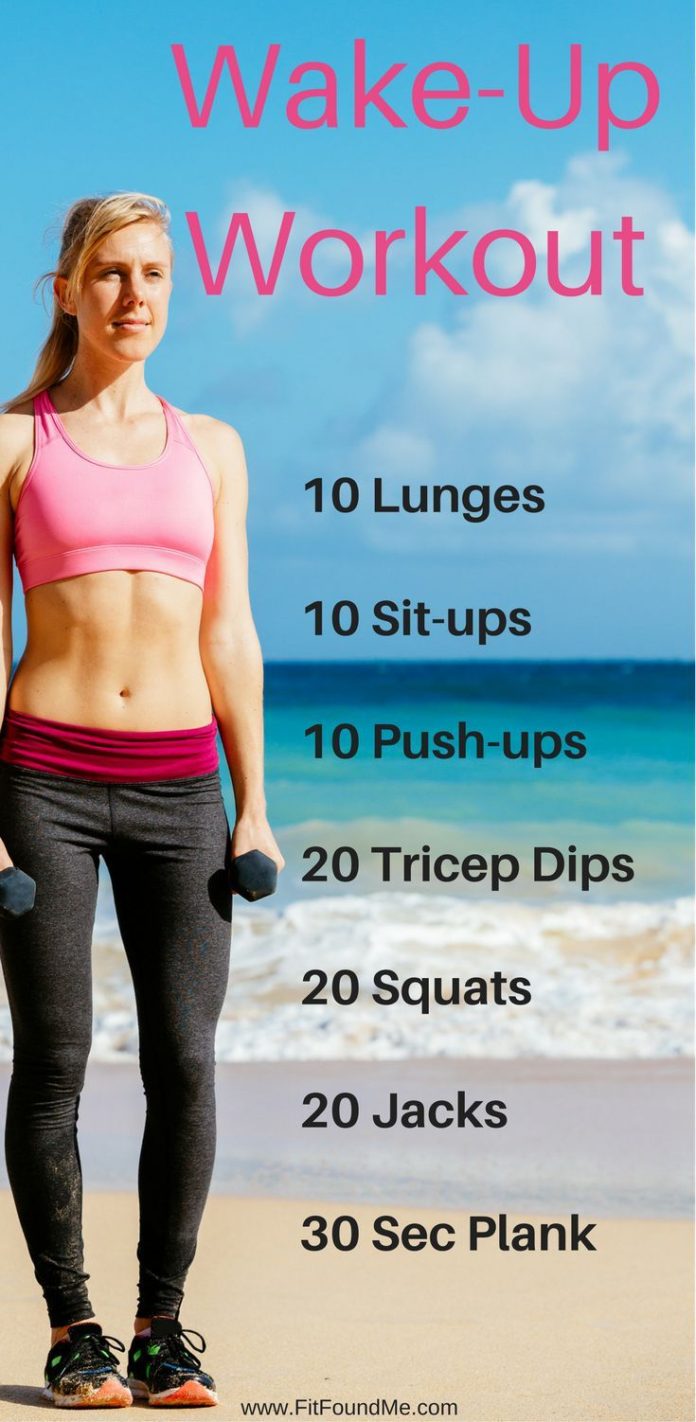

When you’re actively chasing a fitness goal, it can seem counter-productive to take a whole day (or two!) away from the gym to rest.
#Fitness tip of the day professional
If necessary, consult with a professional or coach to see if there’s an adjustment you need to make in order to avoid pain. You’re better off backing down from a pain-inducing move than pushing through it and risking injury. Stop, evaluate what you did to cause the pain and either adjust your form or take a rest. Pain is not gain pain is a sign that you’re either doing something wrong or you’re doing something your body isn’t ready for yet. If possible, get professionally fitted for your shoes. Make sure to research the proper type of shoe for your activity – Never wear running shoes into the weight room, for example! – before starting. Wear clothing that is as close-fitting to your body as you are comfortable with, but not too tight that it hampers your movement. This could mean everything from wearing ill-fitting, old, or incorrect shoes for your chosen sport to wearing clothing that’s loose and baggy, causing you to trip. One of the leading causes of sports injury is being improperly attired for the activity being performed. Follow up your workout with another 16 ounces within two hours of finishing to replace lost fluids. Try to fit in 16 ounces of water about two hours prior to a workout, then keep a bottle of water with you for sips every 15 minutes or so during exercise. But, just as not drinking enough water can be a bad idea, so can drinking too much, as that sloshy feeling in your stomach during a workout can leave you nauseated and distracted. As you exercise, you sweat, releasing not only water from your body but also electrolytes that are important for brain and body function. Just like with food, exercising when improperly hydrated can lead to injury. Protein is great for rebuilding muscle fibers that may have been put through the ringer during your routine, so make sure it’s part of your post-workout noshing. Eating a light, balanced meal or snack two hours before training will help fuel your performance, as will a snack or meal shortly after a workout. Eat a balanced dietĪ proper diet, and eating at well-timed intervals around training, is just as important for your health and exercise performance as is the training you do.
#Fitness tip of the day how to
Take things slow, learn how to properly execute the moves, and your hard work will pay off down the road. Every sport can benefit from a little expert assistance, including aspiring runners, swimmers, or tennis players. Improper form, especially in weightlifting, can cause serious injuries that will cause you to halt your training. This may mean working with a professional for a few sessions. If you’re beginning a new workout regimen, take the time early on to learn proper form. By switching up your training routine every so often, or even rotating the types of training you do every other day, you will engage and strengthen more of your muscles, giving you a better overall workout and improving your strength. Also, if you perform the exact same routine day in and day out, you may get overconfident and attempt to use too much weight or let your attention wander, which can be dangerous. Our muscles get used to the same moves if performed over and over again, potentially leading to overuse injuries. Cross-trainĬhanging up your exercises, when done carefully and with your physical limits in mind, can actually benefit your training instead of hurting it. A couple of days at lower intensity while you figure out where your training sweet spot is will do much less to impede your eventual performance than starting off too hard, injuring yourself, and having to take several days or weeks off to recover. Be realistic about your current abilities and start out slowly if you’re just getting into exercising or if you’re starting up a new program. Just because you were able to execute that heavy lift when you last trained a month ago, or were able to run a 7-minute mile five years ago, doesn’t mean you are able to today.

Slow stretches where you assume a position and hold it does not get your muscles moving enough for a proper warm-up, so avoid them if possible. Spend 5 to 10 minutes before your workout performing an active warm-up, meaning you keep your body moving by walking or performing dynamic stretches such as leg lifts. Cold muscles are less pliable and more prone to tearing, which can spell disaster for your workout plans. Jumping straight into your run or aerobics class is a surefire way to injure yourself. Here are 9 tips for preventing injuries during exercise: 1. Whether you’re a casual exercise enthusiast or hard-core gym buff, getting injured while working out doesn’t have to be an inevitable part of life.


 0 kommentar(er)
0 kommentar(er)
